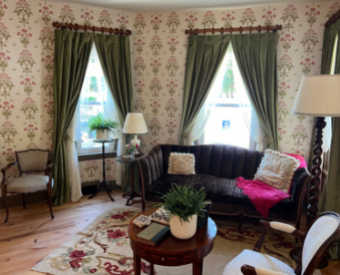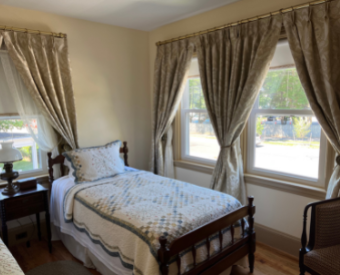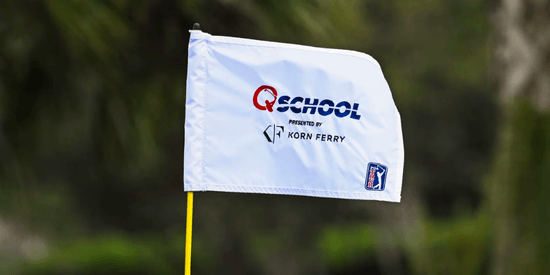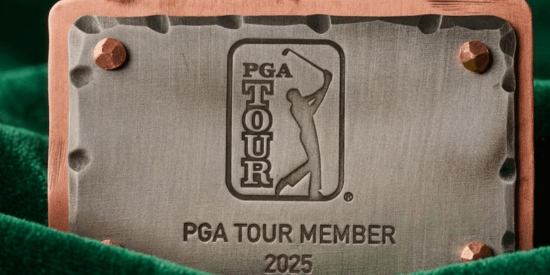Returning Francis Ouimet's house back to the game
6/14/2022 | by Sean Melia of AmateurGolf.com
see also: U.S. Open, the USGA's Major Golf Championship, Shinnecock Hills Golf Club

The house across the street from The Country Club is being restored to how it looked in 1913 when Ouimet called it home
When it comes to golf, the word “house” usually evokes images of clubhouses: regal, simple, opulent, or utilitarian.
However, the house Hynes wants to give back to the game of golf is a small Victorian that Francis Ouimet grew up in.
“Francis’ bedroom is 275 yards away from the seventeenth green,” Fred Waterman, The Country Club historian, said. He paced it off himself.
The Country Club and Francis Ouimet are linked in history. Ouimet was born in 1893, the same year golf was first played at The Country Club. Ouimet would cut through the course as a shortcut to get to school; he’d even collect lost or neglected golf balls, which he’d use those balls for practice, trying to clear a pond with the one club he had as a child. Clearing the pond was the first bit of golf satisfaction Ouimet experienced, and he was hooked.

When Ouimet won the 1913 U.S. Open as a 20-year-old amateur over two of Britain's best, Harry Vardon and Ted Ray, the game of golf exploded in the United States. In 1913 there were 340,000 golfers. That number grew to 2.1 million in the next seven years, a true golfing boom that many tie to Ouimet’s win in Brookline.
Ouimet would remain an amateur his entire life, winning the U.S. Amateur in 1914 and 1931, which was a championship he coveted more than a U.S. Open. He participated in the first 12 Walker Cups, the first eight as a player and the other four as a captain. He went 11-1. He was also the first non-Briton elected as the Captain of the Royal and Ancient Golf Club.
As far as records show, the house on Clyde Street remained in the Ouimet family until the 1980s. That’s when the Wielers purchased it. They had been told a golfer lived in the house but had no interest in the game or its history.
However, Tom Hynes, who lives just a few houses down, knew all about the house.
“They are very unassuming,” Hynes said of the Wielers. “But they walked their dog down the street in front of my house every now and then.”

“I told them, ‘When you’re ready to sell your house, I’m your man,’” Hynes said, sticking his thumb into his chest. “They were a little put-off because they weren’t planning on selling the house.”
Hynes knew at some point they would sell their house.
Commercial real estate is Hynes’ life’s work. He doesn’t work in thousands of square feet, he works in hundreds of thousands of square feet.
Boston is in his blood. His uncle, John Hynes, was a three-term mayor in the 1950s. Every April tens of thousands of runners finish the Boston Marathon on Boylston St.; the final stretch of the run brings them past the Hynes Convention Center.
Then one morning in 2020 it happened - the Wielers approached Hynes. They were ready to sell, and Hynes was ready to buy.
“I was in their living room the next day and we had a handshake deal,” Hynes said.
Then the work started. Hynes didn’t just want to give the house back to golf, he wanted to restore it back to the way it was when Ouimet was rolling putts in his bedroom before winning the 1913 U.S. Open.
Hynes formed an LLC and gathered the financial support of some fellow members at The Country Club, but this was Hynes’ project to the core.
In the summer of 2021, it was used as housing for the assistant pros at The Country Club. Then the restoration began, and the old Victorian house on Clyde St. has been bustling with activity.
A photograph from 1900 of a seven-year-old Ouimet with his parents, Mary Ellen Burke and Arthur Ouimet, along with the family dog has helped Hynes and the crew see what the house looked like from the outside 119 years ago. Incredibly a lot of the exterior remains intact, minor details like the curved beams on the porch and the windows to the left and right of the front door haven’t changed. The color of the house and shutters have changed, but it will be restored to a traditional Victorian design - light paint with dark trim and shutters.
When they pulled up the carpet in Ouimet’s second floor bedroom, they discovered the wood flooring from Ouimet’s era. It was filled with nails after years of different carpeting and renovations. Hynes wanted to restore it, a tricky proposition, but they managed to get it done by carefully pulling it all out and sending it to a master craftsman to clean out all the nails.
As the labor on the house continued a worker came across two golf clubs in the attic’s ceiling. An astounding discovery that tickled Fred Waterman, even though it was nearly impossible to directly link them to Ouimet.
“The clubs are from the late 1800s or early 1900s,” Waterman said. “And his brothers also played, so it’s very possible to imagine Francis held those clubs.”
Along with the clubs, a broken bow and arrow and a coconut with a face carved into it were also found in the ceiling. Signs of childhood and a reminder that Ouimet was just 20 when he won the U.S. Open.
The clubs are in safekeeping and the heads of both putters are in good shape, but they certainly look like they were well used. Dents and marks speckle the back of both of them.

The two putters found in the Ouimet house ceiling
The historian Waterman is also moved by the staircase’s banister and handrail. There is a wooden ball at the bottom of the stairs that is impossible to not use to balance as you navigate the tight turn on the narrow staircase.
“As Ouimet headed out the door that Saturday morning to win a U.S. Open, he touched that bit of wood,” Waterman said, nodding his head at it from the front of the house.
There is no final goal for the house as of now. Hynes hopes to have the interior finished by the start of the U.S. Open. There are a few bits of kismet that have helped enhance the project and make it come to life.
For one, the contractor, Willer Krautz, also restored the house of “America the Beautiful” songwriter Kathy Lee Bates on Cape Cod. The furniture in that house matched Ouimet’s 1913 timeframe and decor. When the Bates house was sold that furniture had no use and was placed in storage. Hynes pounced on the opportunity and will use the furniture in the Ouimet house.
Secondly, a Country Club member donated an old phone that matches the era. It will be placed In the kitchen. Visitors can pick it up and hear the actual voice of Francis Ouimet from various interviews reliving his triumph in the 1913 U.S. Open. A true call from the past.
The Ouimet house is hallowed golfing ground that sits across the street from even more hallowed ground. The house and The Country Club will forever be linked. Thanks to Tom Hynes and the team he has put assembled, it will return to the game of golf and that connection will be stronger than ever.
About the U.S. Open Golf Championship
The U.S. Open is the biggest of the 15 national championships conducted by the USGA. Open to amateurs and professionals. Amateurs gain entry via USGA win or runner-up finishes while having the opportunity to qualify alongside non-exempt professionals...
Most Popular Articles

2025 PGA TOUR Q-School Guide: Sites, Scores, and Who Advanced
Dec 5, 2025Second Stage is complete and Final Stage awaits at Sawgrass — follow every Q-School leaderboard and the players still chasing
2025 LPGA TOUR Q-Series: Final Qualifying Stage FINAL SCORING
Dec 8, 2025Helen Briem earns medalist honors, 31 players headed to the LPGA next year
2025 PGA TOUR Q-School Final Stage: Ewart Leads Five New TOUR Card Winners
Dec 14, 2025A.J. Ewart topped Final Stage at TPC Sawgrass, leading five players who secured PGA TOUR membership for 2026.
Australian Open at Royal Melbourne: Preview, amateur bios, and how to watch
Nov 30, 2025Rory McIlroy headlines one of the championship's top fields in years - at least four amateurs will have their chance at gloryInside Gil Hanse’s Restoration of Baltusrol’s Upper Course: A Return to Tillinghast’s
Dec 11, 2025Renowned architect Gil Hanse reveals how he brought Baltusrol’s Upper Course back to life by honoring A.W. Tillinghast’s original